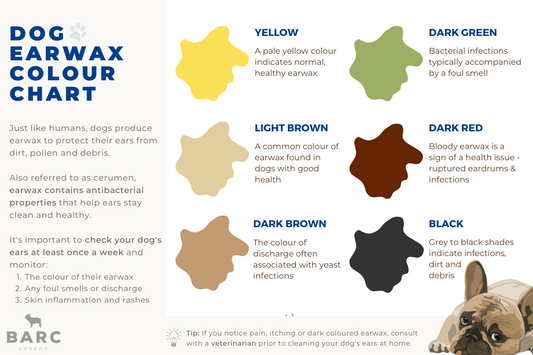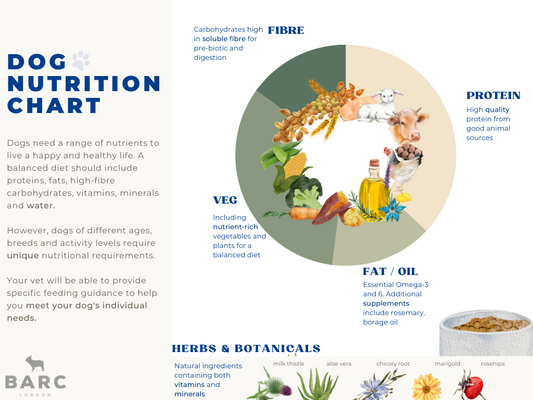Just like humans, dogs should have their teeth brushed on a daily basis to reduce plaque build up and reduce the risk of tooth decay later in life.
Keeping your dog's teeth clean is an important part of their wellness and grooming routine, but as many dog owners know - teeth brushing isn’t always a pup’s favourite activity…
Even if your dog doesn’t enjoy having their teeth brushed, you should still be finding ways to prioritise their dental health. To help, we’ve put together some tips to help get those teeth sparkling and gums glistening.
- How to clean dog's teeth:
- How often should you clean your dog's teeth?
- Best ways to keep dog's teeth and gums clean:
- Signs of dental disease in dogs:
- What should I do if I think my dog has gum disease?

How to clean dog's teeth: 🦷
It’s always a good idea to ask your vet for help and information about teeth brushing, as some breeds are more prone to dental diseases than others.
If you’re wondering how to clean a dog’s teeth without causing fear and discomfort, we recommend slowly building up to brushing with the following steps:
- Start off by adding a small amount of pet toothpaste to your dog’s food. This is a good way to get your dog used to the taste of toothpaste, which will help with brushing later down the line.
- After a few days to one week, wash your hands and apply the toothpaste to your finger, encouraging your dog to get more familiar with the taste by smelling and licking it.
- Repeat this process until you feel your dog is familiar with the taste. At this point, you can gently rub your finger along their teeth and gums. Don’t worry if your dog is initially put off by the sensation, over time they will get more used to the sensation.
- Once you feel confident your dog is ready to have their teeth brushed, you can apply the toothpaste to a toothbrush, hold your dog’s mouth closed and gently lift their upper lip, exposing the teeth.
- Start to brush your dog’s upper canines, back teeth and then their front teeth up and down in gentle circular motions. You want to make sure that you target your dog’s gum line to ensure you’re brushing effectively.
Ideally, teeth brushing should be gradually introduced when your dog is still in the puppy months. It’s important not to rush the process, and always make sure your dog feels comfortable with what you are doing.
How often should you clean your dog's teeth? 🪥
According to Vets4Pets, teeth brushing should be performed on a daily basis for maximum protection. Ideally, try to brush your dog’s teeth every 24 - 48 hours, and make sure you get your dog’s teeth professionally cleaned by veterinary dentists at least once a year.
Best ways to keep dog's teeth clean:
There are lots of different ways to keep your dog’s teeth and gums clean and healthy. As well as using the traditional approach of brushing teeth, you can also incorporate specially formulated foods, dental toys and natural chews to prevent dental problems from occurring.
Toothbrushes
A standard toothbrush from the supermarket will be fine for brushing, but you can also invest in a specific dog brush, or one that fits on your finger. As mentioned in the teeth cleaning steps, you must let them get used to having their mouth opened and lips lifted before introducing the toothbrush.
Toothpaste
There are lots of doggy toothpastes on the market! Make sure to use a dog friendly toothbrush, and never the same brush that you use for your own mouth. Often, toothbrushes for dogs taste like chicken or beef so most dogs actually think of it as a tasty treat.
Dental Toys
There are specific toys out there to help with your dog’s daily teeth brushing. Many of these toys have rubber bristles and can be utilised with some doggy toothpaste, so your dog is effectively brushing their own teeth.
As well as this, dog toys made from rubber and rope help to stimulate gums and prevent plaque from building up.
Water Additives
Dental water additives are a great way to keep a dog’s mouth clean and fresh. These plaque-reducing water additives and can be used in between brushes, acting like a mouthwash to prevent bacterial growth and reduce tartar buildup.
Kelp and Seaweed Products
Certain types of brown seaweeds can contribute towards a dog’s improved oral hygiene. This is due to their amazing anti-microbial properties. Seaweed contains an enzyme called bacillus licheniformis which works to strip bacteria from plaque, reducing gingivitis and keeping a dog’s mouths healthy.
Natural Herbs and Foods
There are an amazing range of natural herbs and foods that you can incorporate into your dog’s diet to help freshen their breath naturally. Cleaning a dog’s teeth naturally works to promote good hygiene, and includes things like mint, parsley, carrot, apple, apple cider vinegar, cinnamon and coconut oil.
Natural Chews
It’s well known that chewing helps to remove plaque build-up for dogs. When shopping for teeth cleaning supplies, look out for natural chews including antlers, wood chews and bull horns. Dental chew sticks often contain a lot of calories, and have little impact on oral hygiene unless fed in large quantities.
Diet
Your dog’s diet and nutrition plays a massive part oral hygiene and their overall health. Make sure your dog is on the best food possible and avoid high fat chews, sugary foods and calorific treats. Speak to your vet about which food you should be feeding your dog to ensure a balanced diet with high nutritional value - and adding in probiotics can also help.
Signs of dental disease in dogs:
In the early stages, dental diseases like gingivitis and periodontal disease can be hard to spot. This type of infection affects a dog’s oral cavity, and over time can cause gum erosion, pain and teeth loss. Common signs of dental disease in dogs include:
- Damaged and bleeding gums
- Bad breath
- Teeth sensitivity and pain
- Discolouration
- Reduced appetite
- Plaque buildup
- Receding gums
Gingivitis tends to occur before periodontitis, and it’s important to diagnose this type of gum inflammation as early as possible as it is treatable. Unlike gingivitis, periodontal disease is irreversible.
What should I do if I think my dog has gum disease?
As soon as you notice possible signs of dental disease or inflammation, you should seek advice from your local vet.
Lots of UK veterinary practices offer free dental clinic appointments with nurses, and during these consultations you will receive specific information for your dog's condition.

